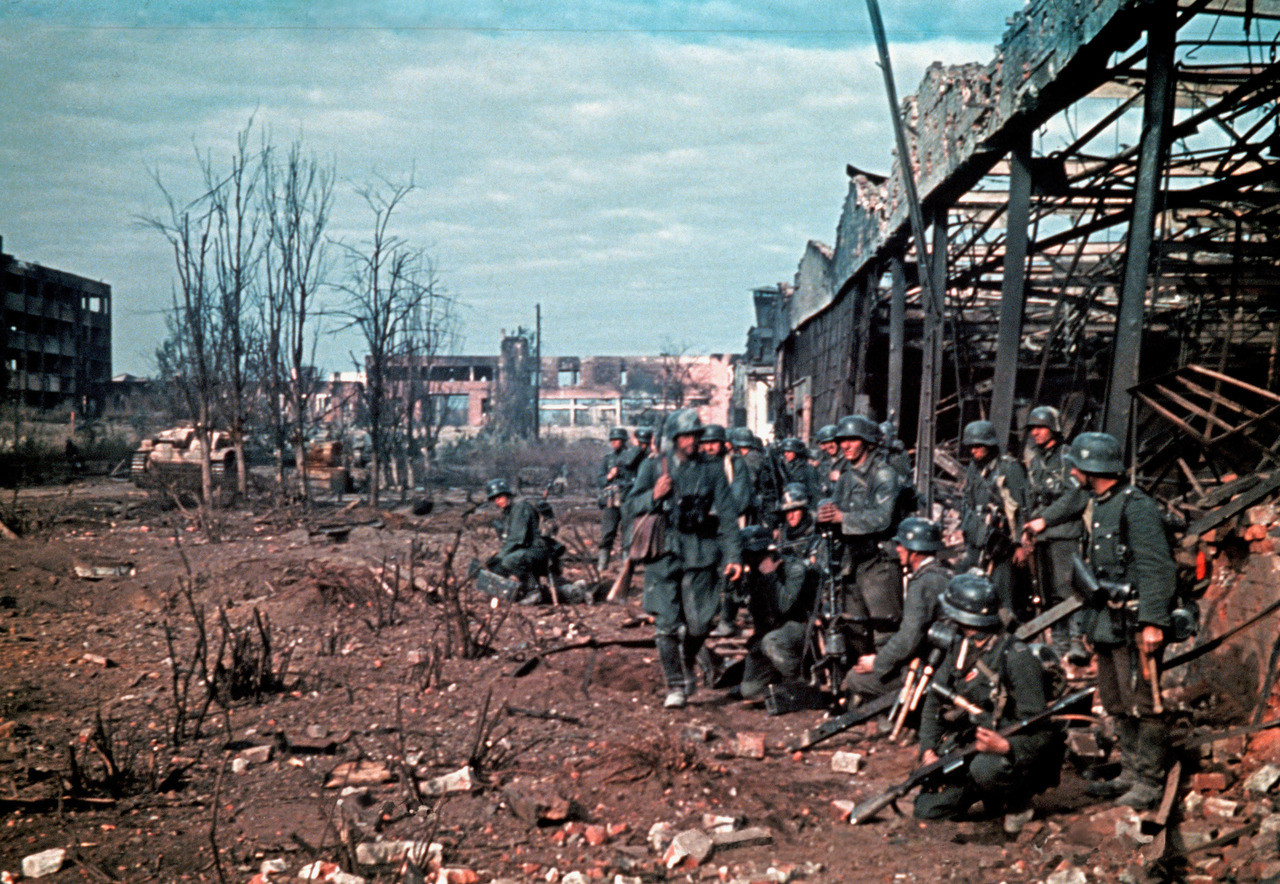Preparing for an assault on a warehouse in Stalingrad, 1942

By September 1942, a brutal hand-to-hand combat was being waged inside Stalingrad. As they fought house-to-house and street-to-street, the Germans found that all the strategic advantages they had in fighting across the Steppes were lost in the close range of the city.
The mechanized tactics of tanks and blitzkrieg were of no importance in urban warfare. Due to the proximity of the large city, tank mobility was impossible and not effective.
Ironically, a sniper was more effective than a tank. Sometimes soldiers used knives and bayonets to kill each other. A lack of supplies, harsh elements and stubborn Soviet resistance eventually led to the defeat of the German army.
A bitter fight broke out for every ruin, street, factory, house, basement and staircase. Even the sewers were firefighting sites. The Germans called this unseen urban battle the Rattenkrieg ("Rat War"), joking bitterly about occupying the kitchen but still fighting for the living room and bedroom.
The buildings had to be cleared from room to room through the rubble out of residential neighborhoods, office blocks, basements, and the bombing of apartment high-rise buildings.
Some high-rise buildings, previously detonated in roofless shells by German aerial bombing, had floor-to-floor, close quarters combat, with the Germans and Soviets on alternate levels, firing at each other through holes in the floor. .
German military doctrine was based on the doctrine of combined arms teams and the close cooperation between tanks, infantry, engineers, artillery and ground attack aircraft.
The Soviet commander of the 62nd Army, Vasily Chuikov, developed the key strategy of "embracing the enemy", by which under-armed Soviet troops held German forces close to themselves to reduce the superior firepower received by the Wehrmacht. This slowed the German advance and reduced the effectiveness of German gains in supporting fire.

No comments: